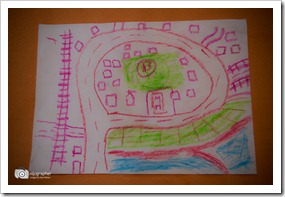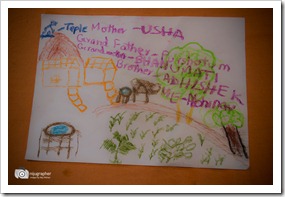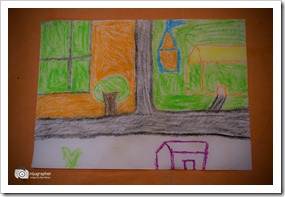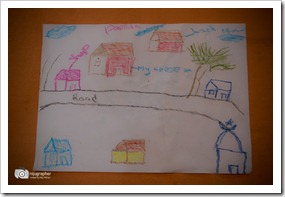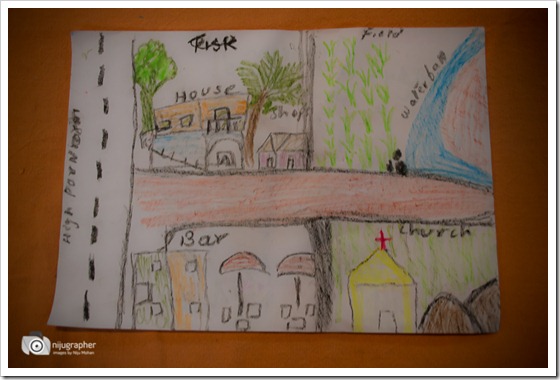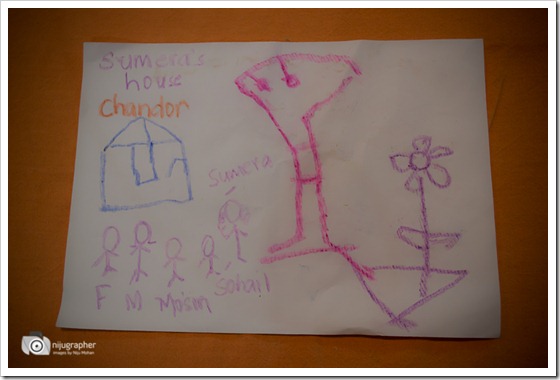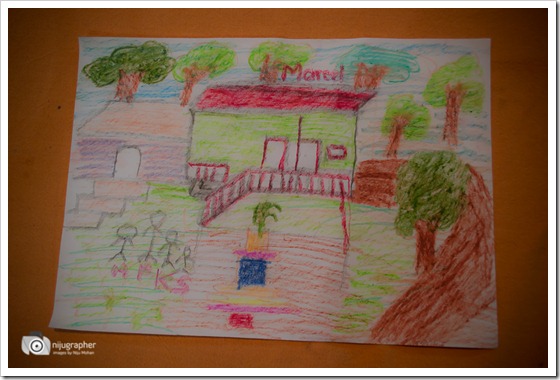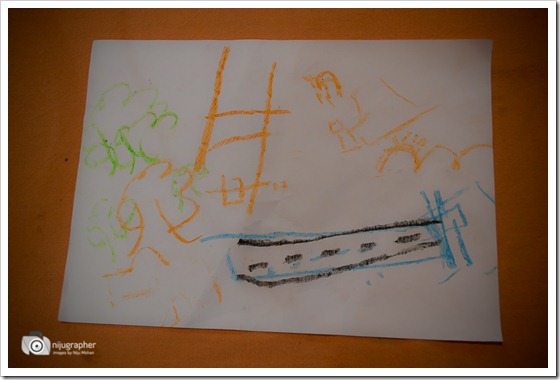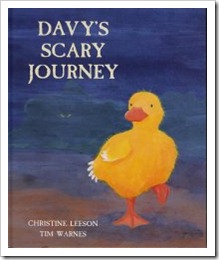 A wet day in August and I get to share it with my friend and gifted teacher Elaine. We set off for the center both knowing we are reading “Davy’s Scary Journey’ a book that earlier in the month hit some of our key indicators
A wet day in August and I get to share it with my friend and gifted teacher Elaine. We set off for the center both knowing we are reading “Davy’s Scary Journey’ a book that earlier in the month hit some of our key indicators
- ✓ Available at Bookworm in large print – large format
- ✓ Story line that can generate interest, excitement, anticipation and humour – our experience has led us to understand that the NAB children have a very good auditory processing level and good listening comprehension in English.
- ✓ Characters that children are familiar with from earlier text or experience
- ✓ Plot and theme that is central to their lives.
We realised early that day that the key to the story also lay in the visuals. Davy’s journey could get scary for us, as we forgot that this is story time with visually impaired children!
The hinge of the story lies in the map of how far Davy has walked and while Davy ( and I am giving the story away now ) does not really fly as far as the swallows, he thinks he does ! The final map shows you that Davy only circled the farm, imagining the fields to be the grasslands and the stone fence to be the mountains and the farm cat to be the lion etc..
We wondered what we would do. We were fortunate to have the NSS volunteer team from the Goa College of Home Science create a tactile map for the children to explore the route from the NAB center to their school. But that was explored rather quickly. We needed to connect our children with Davy and we decided to work on the mapping idea.
Often and almost like an old dancing couple who know the moves of each other on a new dance floor, Elaine and I decided to talk about maps in relation to the children’s home. The NAB residential center is where the children live during their school days, on weekends and vacation they go home to different parts of Goa and this was a good chance to learn about their home lives.
Elaine explained and elicited the key features of maps, how each child should start with their own home and then move outward. Marking the landscape around their houses and providing us with a map.
3 of the 13 children present that day are blind. The others have varying degrees of visual impairment and they taught me so much.
I share some observations here:
Abhisek and Abhinav
Both brothers and therefore live in the same house. Each map shares a different perspective.
Abhisek is older and was able to ‘see’ his home in relation to a wider world. He mapped the approach roads, with his head held 1 inch from the paper to see his own work. He was frustrated that he could not draw the rail over bridge because he felt it was important to note that access to his house is on the road underneath. He shared the cul de sac to tell us that should we go left we were not lost, we would find his house as the road looped and he wanted us to know that the green patch was the hill – the dongor and so the area where he lives is Dongri.
Abhinav who is 5 years younger than Abhisek, showed us the house in relation to the immediate world. For him the field in front, the well at the side were important landmarks in relation to the road and his orientation of the dongor was the temple at the top.
Shahid and Shaheeda
A brother and sister with fairly severe visual difficulties also had different images to share. While Shahid took painstaking trouble to use colour and wanted me to know that the home was near fields, and had a temple near by, his sister did a more general map in relation to the larger surroundings. While Shahid shared very willingly about the family who lived in the house, Shaheeda was reticent to share as she felt it was too large a family to reveal. We learnt that 19 people live in the home which is their maternal grandparents home as the children have no father. And with the wisdom of one who knows, Shaheeda said, “soon it will be 20!”
Akshat
He was confident that Elaine and I would find his house with the map he drew and we would. It has so much detail and labelling and he was so proud to share. Akshat knew and he knew his world well. He was a Davy!
Sumera
Sumera is blind and her picture of her house, the land mark tree and flowers around was what she could do and she shared telling me she had used the wrong colour as the box did not have green!
We learn from Sumera every time. Sumera also reacted to Davy by saying ” he took the comment from the Swallows, about not being able to fly to a warm country as a challenge!’ She picked that up almost seamlessly .
And more
Cookie
Cookie paid great attention to the colour and shape of the land around her house. The Tulsi Vrindavan was alive and well and the mud road that curved to the back was safe to walk.
Yogesh
Yogesh who lives in Ponda, marked the road, the jungle near his house and his house near it, for us to find him when we visit.
We had so many maps, so many stories and so many relationships shared and at the end of the session, Davy’s Scary Journey was a journey alright , not scary but powerful. It reminded me that representation can be such an empowering process towards literacy, that language starts with me and my life and can grow out into other forms and that we are blessed to be a part of lives so rich that allow us to grow.

